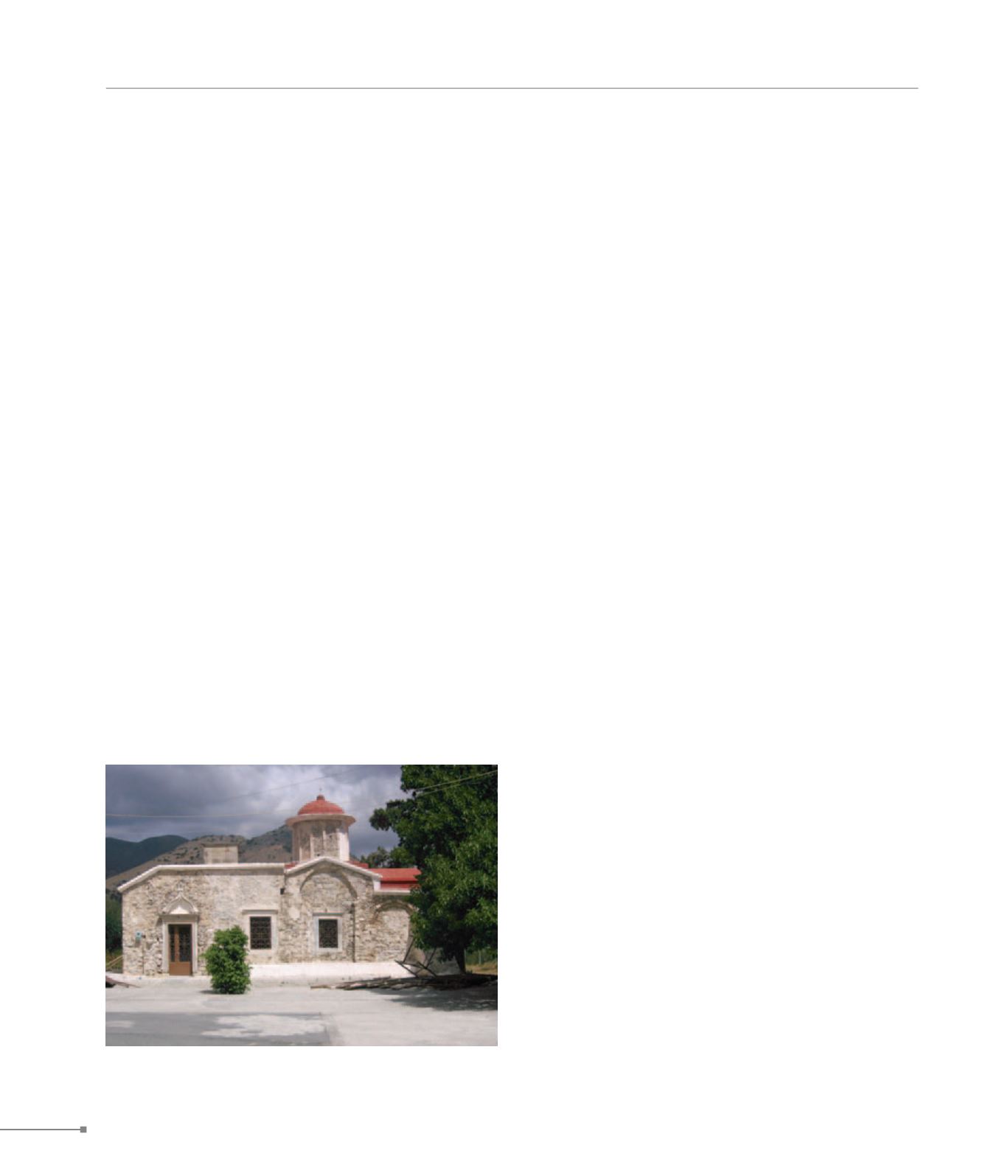
Avdou.
Choumeriako.
CRETE
282
494. Choumeriako, Panagia (Χουμεριάκω, Παναγία)
488.
Avdou.
Near Avdou are remnants of an Early Christian basilica with
mosaic floors. Saint Constantine contains frescoes by Manuel
and Ioannis (1444-5), among the most important of the
Constantinopolitan-style art of the Phokas family. The spon-
sor’s inscription mentions the painters, the sponsoring priest
Manuel, and the date. It is remarkable that, although it was a
period of Venetian occupation, the inscription also included
the name of the Byzantine Emperor Ioannis Palaeologus, dur-
ing whose reign the church was decorated. From the wall-
paintings of Saint Anthony there survive evangelical scenes in
the barrel vault and a full-body saint on the S wall, dating from
the third quarter of the 14th c. The large church of Panagia is
a domed, free cross plan structure. It features brickwork deco-
rations and, in the blind drum, a remarkable doorframe with
a pointed arch of Gothic style, which gradually prevailed in
Cretan churches of the period of Venetian rule. The extensive
iconographical programme in the barrel-vaulted, single-nave
church of Saint George includes scenes from the saint’s life
(late 14th c.).
phases. There are distinctive scenes from the life of the Vir-
gin Mary in the barrel vault instead of the evangelical cycle, a
practice that has been observed in other catholicons; scenes
from the life of the honoured saint are still included. The origi-
nal decoration dates from the 14th c. The numerous evangeli-
cal depictions extend to the barrel-vault of the nave, and the
Second Coming on the barrel vault of the S aisle, date from
the mid-14th c. On the E wall of the S aisle is a large Crucifix-
ion of the second half of the 14th c.
490.
Malia.
An Early Christian three-aisled basilica has been indicated at
Malia, while in the nave of Saint George folk-style wall-paint-
ings of the second half of the 14th c. are preserved.
491.
Latsida.
The apse of Panagia Keragoniotissa has wall-paintings of the
Virgin Mary praying and of the Lamb of God among officiating
prelates (late 14th c.).
492.
Neapolis.
In Aghios Onuphrios, catholicon of a small monastery, are
frescoes of provincial style dating from the second half of the
14th c.
493.
Limnes.
Saint John is a barrel-vaulted, single-nave church with wall-
paintings in Palaeologan style (late 14th c.)
494.
Choumeriako.
The name of this village originates with the Byzantine Chou-
meriakos family. In the centre is the cross-in-square church of
Panagia, which has suffered extensive damage and degrada-
tion. From the wall-paintings there only survives the Pantokra-
tor in the dome, work of the mid-13th c.
489.
Kera.
The catholicon of the Panagia Kardiotissa monastery (14th c.)
was formed gradually with the addition of three barrel-vaulted
aisles and transverse narthex to the original aisleless church.
The wall-painted decoration matches the various building


